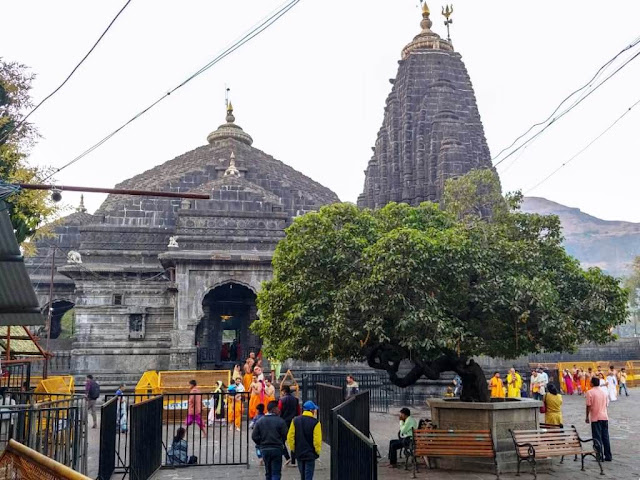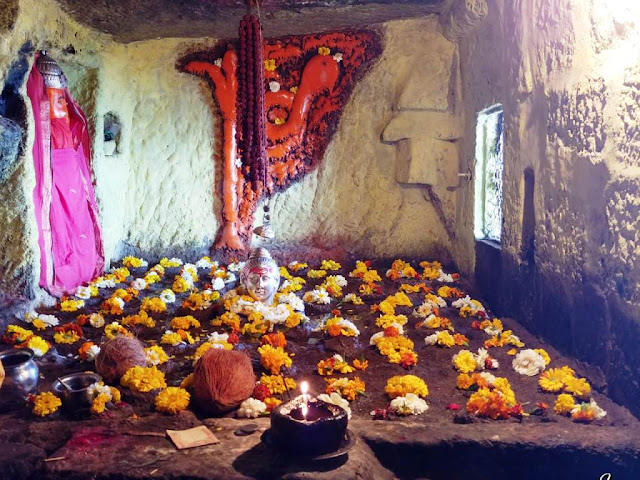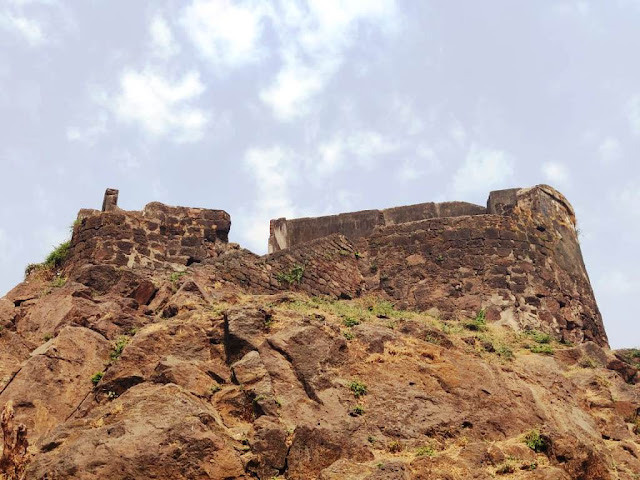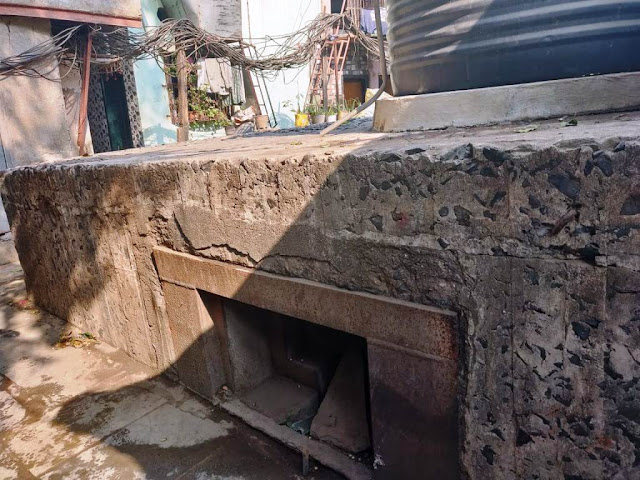 |
| Brahmagiri |
- It is one amongst the four destinations which hosts the largest religious congregation globally – The Kumbh Mela.
- Nashik boasts of having one of the twelve Jyotirlingas as the famous temple of Trimbakeshwar.
- Ramayana, one of the most loved epics in India, had a backdrop of Panchavati. This very own Panchavati is in Nashik.
- The Currency Note Press and the India Security Press are located in Nashik. The Indian Currency and the Government stamp papers are printed in Nashik.
- Another star which has been recently added in the name of Nashik is the wineries located in this area. It is the Nappa Valley of India, with the most famous brand Sula Wines located in Nashik.
- Nashik is also host of annual wine fest – SulaFest.
- Nashik has a unique Coin Musuem.
- The origin of River Godavari is in Nashik.
Nashik has been in our list of
places to visit for a long time. Finally last weekend we were able to knock it
off our list. J
Popular Religious/Mythological Sites:
- Trimbakeshwar Temple
- Ramkund
- Kalaram Temple
- Muktidham Temple
- Sundarnarayan Temple
- Sita Gumpha
- Someshwar Temple
- Brahmagiri – Origin of River Godavari
 |
| Nashik City |
As per the Hindu Mythology, the
Devas (Gods) and the Asuras (Demons) fought over the amrita, the elixir of
immortality produced by the joint churning of the ocean. During the fight for
the elixir between the Devas (Gods) and the Asuras (Demons), the drop of the
elixir are believed to had fallen at four earthy sites. At these four places
the Kumbh Mela is celebrated.
The Kumbh Mela is celebrated
four times over the span of twelve years between four pilgrimage places on four
sacred rivers – Haridwar on River Ganga, Godavari in Nashik, Ujjain on River
Shipra, Prayagraj over the confluence of River Ganga, River Yamuna and River Saraswati.
It is believed during the Kumbh Mela the planets are in such an auspicious
position, that the river turns into the elixir and a dip in the sacred river
will bring in purity.
Ramayana Trail
Nashik is the place where a
major part of the Hindu epic, Ramayana was played out. It is believed that Rama, Lakshman
and Sita stayed here during their 14 years of exile from Ayodhya. It is also
believed to be the place where that the sister of Ravana, Surpanakha was attracted
to Rama. To teach her a lesson, Lakshman cut her nose, thus giving this place
the name – Nasika – meaning nose.
This is the place where Ravana mesmerized with the beauty of Sita, abducted her
which led to the war between Rama and Ravana as told in Ramayana.
During our visit our first stop
was Panchavati, this is where Ram Kund is located. Located in Panchavati is the
very famous temple of Nashik – the Kala Ram Temple.
The temple got its name from
the black stone statue of Lord Ram in this temple.
 |
| One of the numerous temple in Nashik |
Very near to this temple is
Sita Gumpha or Sita Caves. Walking distance from Sita Gumpha is Tapovan, which
is believed to be the place for meditationand Lakshman Bridge which is as per
local belief is the Lakshman Rekha or the line which Lakshman has drawn to
protect Sita.
Trimbakeshwar Temple
One amongst the twelve Jotirlingas,
Trimbakeshwar is one of the holiest places in India and is located around 30
kms from Nashik.
The temple is beautifully built
with black stone with Brahmagiri Hills as the backdrop. Unlike other temples,
the sanctum is deep and therefore a mirror is placed above it, so that the
devotees can have a clear view of the linga. The lingam in this temple has
three faces – signifying Lord Brahma, Lord Vishnu and Lord Shiva.
Early morning is the best time
to visit the temple. As the day progresses the crowd increases and you might
have to stand in queue for hours. The timing of the temple is 5:30 am to 9:00
pm. Every Monday from 4:00 pm to 5:00 pm the crown of the Lord is taken out on
a procession to the kund.
 |
| Trimbakeshwar Temple |
Please note mobile phones are
not allowed inside the temple. If you don’t want to leave the mobile phone in
your hotel room or car, the shops near the temple have mobile locker
facilities. There is a shoe stand on the
left hand side of the temple entrance gate.
There are plenty of hotels and
dharamshalas near the Trimbakeshwar Temple.
The Pandavleni Caves
A group of 24 Buddhist around
2000 year’s old caves is situated atop a hill in the middle of Nashik. Around
200 steps climb and you can feast your eyes with the panoramic view of the
City. These caves are not as grand as the caves of Ajanta Ellora in Aurangabad
but if you have time then do make a visit.
 |
| Pandavleni Caves |
Gangadwar
After our visit to
Trimbakeshwar, we decided to climb around 800 steps and visit the Gangadwar. Gangadwar
is the place where River Godavari originates from the Hills.
There is a temple
of Maa Godavari and at her feet is a stone in the shape of cow’s head through
which River Godavari water is flowing drop by drop.
The short and sweet story of
the origin of River Godavari goes like this – Rishi Gautama and his wife Ahilya
used to stay in this area. A cow was accidentally killed by Rishi Gautama. To become
free from the sin of killing a cow (gao hatya) he was asked to take a dip in
the sacred water of River Ganga. Rishi Gautama and wife Ahilya meditated
(tapasya) for years in the name of Lord Shiva to send the River Ganga on earth.
After years of mediation Lord Shiva relented and thus River Godavari originated
from Brahmagiri Hills. Rishi Gautama took a dip in River Godavari and was
released from the sin of killing the cow.
 |
| View - Trek to Gangadwar |
 |
| River Godavari origin |
The view from Gangadwar is a
site to see.
 |
| 108 Shivlingas |
Wine Tourism
Nashik has now become the
little gem for Wine lovers. Nashik is our very own Napa valley. An entrepreneur
Rajeev Samant, set up a small vineyard on few acres of family land. From a few
acres it has now become synonyms with Indian Wines – Sula Wines. The Sula
vineyards now provide wine tours and wine tasting.
The entry fee in Sula Vineyard is Rs 200 per person which can be redeem against any purchase or tour taken in the vineyard. The wine making tour costs Rs 150 per person and wine tasting (6 wines to taste) Rs 400 per peron. Once you complete your wine
tour, take your pick from the dining options - Little Italy (Italian Food)
& Rasa (Indian Food).
Sula Vineyards also has two
luxury resort called ‘The Source”& Beyond” wherein you can enjoy the
calmness in comfort. The prime moto of the resorts are – Relax. Unwind.
Rejuvenate.
 |
| Sula Vineyard |
 |
| Lets shop Wine |
Other
places to visit in Nashik:
- Someshwar
Waterfall
– A quick visit to Someshwar waterfall in this trip told us that this will be a
beautiful place in the monsoons and should be a must visit in the rainy season.
- Gangapur
Dam
– Not very far from the Someshwar Waterfall, lies Gangapur Lake & Dam. We
stopped over at this place but were not given entry as permission from the
Department of Irrigation is required.
- Trek
to Brahmagiri
– We have decided to do this trek in the monsoon this year when the weather
will be pleasant and the mountains will be green and serene.
- Coin
Museum
– Another place to visit on our next trip to Nashik is the coin Museum. It is
closed on Sunday.
- Anjaneri
Fort
– It is believed to be the birth place of Lord Hanuman. A 2 kms drive from the
highway and around a 5 kms trek will take you to Anjaneri Fort. This is one
place that’s on our list to visit on our next visit to Nashik.
How to reach Nashik
By
Road: Regular buses ply from Mumbai and Aurangabad. The roads are good.
By
Rail: Nearest railway station is Nashik Road and is well connected to major
cities in India like Mumbai, Aurangabad, Bhopal, Delhi etc.
By
Air: Closest airport is in Mumbai which is approx 200 kms far.












